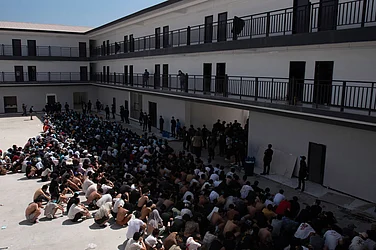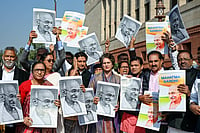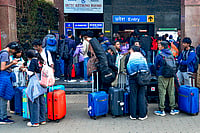An analysis conducted by the State of Global Air (SOGA) has revealed that South Asia is home to some of the world's few regions where nitrogen dioxide (NO2) levels are on the rise. SOGA, a research and outreach initiative dedicated to providing valuable information about global air quality, recently released an overview of air quality in the South Asian region on September 12. This report is based on a comprehensive global air quality analysis they conducted the previous year.
The findings from this overview indicate that while levels of NO2, a pollutant categorized under the highly reactive nitrogen oxides (NOx) group of gases, have decreased in North America, Western Europe, and China in recent years, they have been increasing in South Asia. This increase can be attributed to large-scale initiatives aimed at expanding energy access to households, the growth of industries, and the rising number of vehicles in the region.
In India, major sources of NO2 emissions include coal-based energy production, industrial processes, and on-road transportation. Exposure to NO2 can irritate the airways, exacerbate pre-existing respiratory conditions, heighten susceptibility to new ones, and increase the risk of asthma development in children.
According to 2019 data, Bengaluru and Hyderabad rank highest among major South Asian cities in terms of population-weighted NO2 exposure, as reported by SOGA. It's important to note that while South Asia stands out for the increase in NOx emissions, NO2 emissions in the region are relatively low compared to other parts of the world. Additionally, some South Asian countries have NO2 quality standards that align with interim targets recommended by the World Health Organization (WHO). As an example of a positive initiative, SOGA highlighted India's shift from BS-IV to BS-VI emission norms, which is expected to significantly reduce NOx emissions and yield cleaner air in the coming decade.
The snapshot report also mentioned that efforts to address source-specific emissions, such as those from transportation, are beginning to yield positive results in India. Satellite-based estimates even suggest that NO2 levels may be starting to decline in certain Indian cities.
Regarding another major air pollutant, PM2.5, SOGA pointed out that exposure to it remains elevated in South Asian cities. Less than 1% of these cities meet the WHO's PM2.5 guidelines. In 2019, Delhi and Kolkata topped the list of major South Asian cities with the highest population-weighted PM2.5 exposure. Interestingly, the same two cities also ranked at the top of SOGA's list for major cities worldwide in terms of PM2.5 exposure, with Beijing coming in ninth and Mumbai at fourteenth place.
PM2.5 refers to particulate matter with a maximum width of 2.5 micrometers (0.0025 mm), and it is responsible for the majority of air pollution-related deaths. SOGA's snapshot revealed that 34% of deaths in South Asia's 20 most populated cities are linked to PM2.5 exposure, causing Indians to lose an average of 1.5 years of their lives due to PM2.5 pollution.
A recent study by the University of Chicago Energy Policy Institute also highlighted the detrimental effects of particulate pollution on Indian life expectancy. It estimated that particulate pollution reduces the lifespan of the average Indian by 5.3 years. If India were to reduce particulate pollution to meet the WHO guideline, residents of Delhi could gain nearly 12 years in life expectancy.


























